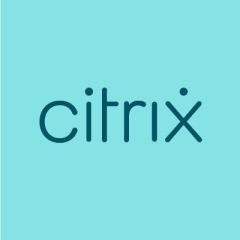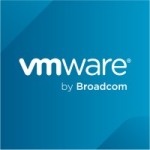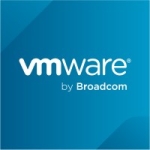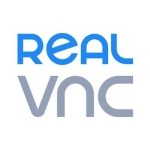What is our primary use case?
I am publishing desktops as well as applications.
What is most valuable?
Citrix offers a range of products that can be used straight out of the box.
When it comes to Citrix, the main advantage is its protocol, which has gone through several name changes including ICA and HDX. It originally started out as Thinwire in 1988, and now they are back to using that name again.
This protocol allows for faster transmission and beats competitors such as RDP. Citrix has tried various approaches with VMware, but nothing can beat the speed of their protocol, which works very effectively.
What needs improvement?
Using the app layering feature can be quite difficult and cumbersome.
For how long have I used the solution?
I have experience installing Citrix since 1997 when we published desktops using Windframe 1.7. Back then, we had to publish desktops and applications from the terminal server, which is now known as the remote desktop server, but we didn't have a desktop for over a decade.
We had to figure out all the applications and printing for ourselves. However, everything has become much simpler now, and the issues we used to face have been largely resolved.
What do I think about the stability of the solution?
Citrix has proven to be quite stable in my experience. Of course, its stability ultimately depends on the skill and expertise of the people managing it. However, I have personally overseen the implementation of Citrix in very large hospital systems, with over a hundred thousand concurrent connections, specifically for the deployment of medical applications and desktops. Overall, I find Citrix to be very reliable and stable.
I would rate the stability a nine or a ten out of ten.
What do I think about the scalability of the solution?
Provisioning Server is a fantastic option for image management in Citrix Virtual Apps and Desktops. It offers excellent performance and reliability. On the other hand, while Machine Creation Services can be scaled easily, they can significantly increase storage consumption. For instance, creating a Windows 10 image in MCS typically requires at least 80 GB of storage, in addition to any separate disks needed.
To store changes made by users in Machine Creation Services, the differencing disk must be equal in size to the base disk, leading to significant storage consumption. On the other hand, Provisioning Server uses image versioning, creating a new image version every time it's modified. As a result, virtual machines streamed from the server revert to their original state after a reboot, which is similar to their state during the first boot.
Using the provisioning server, I start by configuring a virtual machine with either a 2016 or 2019 server operating system. I install the necessary Citrix client provisioning server target device software, followed by installing the required applications. After that, I capture the entire configuration to a file share. The image is then streamed from the file share to the hypervisor, which can handle multiple machines. In some large-scale deployments, we have used a single image to provision thousands of servers.
Once the image is captured and stored on the file share, it is set to read-only mode, and any changes made to it are not accepted until it is put in read-write mode. When a virtual machine is rebooted, it returns to its previous state before the changes were made. This feature can be beneficial in situations like a virus outbreak, where a simple reboot of the virtual machines can remove any malicious code or changes.
A provisioning server offers a faster recovery time from a bad change and is generally faster than machine creation services. With the provisioning server, changes are not accepted until the read-write mode is enabled, and if a virus outbreak occurs, rebooting the machines restores them to the previous state. On the other hand, machine creation services' speed is dependent on the storage's speed, and recovery time from a bad change can take longer, especially with a large number of devices. If a bad change is made with machine creation services, the replication process can take a while to revert, whereas, with a provisioning server, all machines can be rebooted quickly.
Within thirty minutes, I can restore my system to its previous state using the provisioning server.
How are customer service and support?
Technical support is not the best. The quality of technical support has declined over time. Previously, their support was excellent, and you had to pay for each call.
The support staff were very efficient and did not waste time. However, they have now changed their support model so that it's included with your licensing, and they have hired new staff.
The first-line support staff follows a scripted process, and they are not necessarily highly skilled. You have to go through all the steps before you can speak to someone knowledgeable, or you have to insist that it's an emergency and you need immediate assistance.
In general, the support used to be good, but currently, I am not satisfied with it.
How was the initial setup?
It depends on the image management that you choose to use.
Provisioning Server is one such solution, but it can be challenging to set up without the right expertise. As an alternative, Citrix offers another image management technology called Machine Creation Services, which is easier to use but can significantly increase storage consumption.
What's my experience with pricing, setup cost, and licensing?
Their licensing model used to be on a per-year basis, where you would negotiate the cost per user for a year. For instance, if you had 25,000 users, you could negotiate the cost accordingly. However, they are transitioning to a subscription-based model where the cost is incurred monthly.
They argue that this model allows companies to switch from a capital expense to an operational expense, making budgeting easier. However, I am not a fan of this model. I prefer paying only for the number of licenses that I need based on the number of concurrent users, like the previous model.
What other advice do I have?
It is important to receive proper training rather than relying solely on online resources or Googling.
I have been using it successfully in larger enterprise deployments since 1997.
I would rate Citrix Virtual Apps and Desktops a nine out of ten.
I am currently working as a senior infrastructure engineer for a company, but in the past, I have also been a reseller and had my own consulting company where I sold and provided consulting services for Citrix products.
Disclosure: My company does not have a business relationship with this vendor other than being a customer.





















